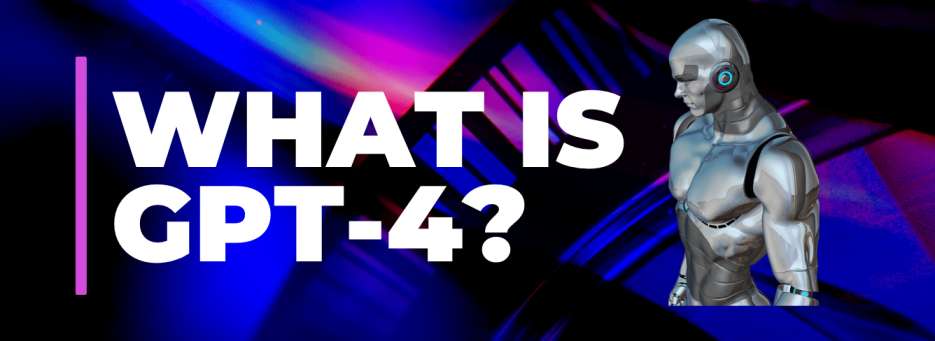
GPT-4 is a successor of GPT-3. there is a significant improvement in speed and the data which is used to train the GPT-4 is insane. GPT-4 can be a game changer in the world of AI. There is also a significant improvement in the coding knowledge of GPT so it can be much more helpful when we as developers take the help of GPT-4.
In the world of AI, OpenAI’s GPT-3 has been making waves with its ability to generate not just human language, but also computer languages. Its capacity to create computer code in different programming languages like Python, C++, and Javascript has proven to be one of its most remarkable features. This has led many to predict that OpenAI’s upcoming product, GPT-4, will break new boundaries in generating computer code.
OpenAI’s GPT-4 is highly anticipated as it is expected to improve upon the successes of GPT-3. OpenAI has been actively hiring programmers and software developers with competence in using human language to describe what their code does, which could lead to even more impressive results from GPT-4. This could lead to the development of more powerful tools like Microsoft’s Github Copilot, which uses a fine-tuned version of GPT-3 to improve its ability to turn natural language into code.
However, some are skeptical about the hype surrounding GPT-4, as there is a risk of people being disappointed if it does not seem groundbreaking compared to GPT-3. OpenAI’s CEO, Altman, has even expressed this sentiment himself.
Despite the skepticism, there is still much excitement surrounding GPT-4. OpenAI’s recent launches of DALLE2 and Whisper have shown promising results in the AI space. DALLE2, a state-of-the-art text-to-image model, and Whisper, an automatic speech recognition model, have both outperformed other models in terms of accuracy and robustness.
With the high demand for large language models in the market, GPT-4 is expected to deliver better accuracy, compute optimization, lower biases, and improved safety. While OpenAI has not released any information about the launch or features of GPT-4, AI trends and OpenAI’s previous launches provide some insight into what to expect.
Overall, the launch of GPT-4 is highly anticipated in the AI community, and many are excited to see what it will bring to the table. Its ability to generate computer code and natural language could have significant implications in software development, web development, and data analytics. As AI continues to evolve, we can expect to see more groundbreaking models like GPT-4, which will continue to push the boundaries of what is possible with AI.
Large language models like GPT-4 are becoming increasingly important in the world of AI. These models have the ability to understand and generate human language, which has many potential applications, from improving natural language processing to aiding in the development of chatbots and virtual assistants.
One potential use case for GPT-4 is in the development of chatbots and virtual assistants. These AI-powered tools are becoming increasingly popular in a variety of industries, from customer service to healthcare. With the ability to understand and generate human language, GPT-4 could be used to develop chatbots that are more responsive and helpful, improving the overall user experience.
Another potential use case for GPT-4 is in the field of data analytics. With its ability to generate code in programming languages like Python and C++, GPT-4 could be used to create more efficient and accurate data analysis tools. This could have significant implications for businesses and organizations that rely on data to make important decisions.
GPT-4 could also be used in the development of virtual assistants for people with disabilities. For example, GPT-4 could be used to develop virtual assistants that can assist people with visual impairments in navigating their environment or accessing information.
However, there are also concerns surrounding the development and use of large language models like GPT-4. One major concern is the potential for bias in the data used to train these models. This could lead to biased or discriminatory results when the models are used in the real world. Additionally, there are concerns about the environmental impact of large language models, as they require significant computing resources to train and run.
Conclusion
In conclusion, GPT-4 is the next iteration of the popular large language model developed by OpenAI. As with its predecessor GPT-3, it is expected to push the boundaries of what is possible with AI by generating human and computer languages and improving data analytics and chatbot development. However, there are also concerns surrounding the development and use of these models, including potential bias and environmental impact.
Despite these concerns, the potential applications of GPT-4 and other large language models are vast and could have significant implications for a variety of industries. As AI continues to evolve and improve, we can expect to see more groundbreaking models that further enhance our ability to understand and interact with the world around us.
Frequently Asked Questions (FAQ)
Q1: What is GPT-4?
Ans: GPT-4 is the next iteration of the large language model developed by OpenAI. It is expected to further enhance the ability of AI to generate human and computer languages, and to improve data analytics and chatbot development.
Q2: What will GPT-4 be capable of?
Ans: The exact capabilities of GPT-4 are not yet known, as OpenAI has not released specific details about the model. However, based on the current capabilities of GPT-3 and trends in AI development, it is expected that GPT-4 will have even greater ability to generate human and computer languages, potentially with improved accuracy, efficiency, and safety. GPT-4 could also potentially be used to improve chatbots and virtual assistants, aid in data analytics, and more.
Q3: What does GPT-4 stand for?
Ans: GPT-4 stands for “Generative Pre-trained Transformer 4”. The name reflects the fact that the model is a type of transformer-based neural network that has been pre-trained on vast amounts of data in order to generate text and other types of data. GPT-4 is the fourth iteration in a series of language models developed by OpenAI.
Q4: Is there a GPT-4?
Ans: As of March 2023, there is no official announcement from OpenAI regarding the release of GPT-4. However, based on previous releases of GPT models and trends in AI development, it is expected that OpenAI will eventually release GPT-4. The release date and specific capabilities of GPT-4 are currently unknown, but it is anticipated that it will be an even more powerful language model than its predecessor, GPT-3.
Q5: Does GPT-4 have $100 trillion?
Ans: There is currently no information to suggest that GPT-4 will have a parameter count of $100 trillion. The parameter count of GPT models has increased with each iteration, but it is unclear how large GPT-4 will be. GPT-3, which was released in 2020, has a parameter count of 175 billion, which is significantly larger than previous GPT models. However, it is important to note that parameter count is not always a reliable indicator of model performance, and other factors such as training data and architecture can also affect the model’s capabilities.
Q6: How much does GPT-4 cost?
Ans: As of March 2023, there is no official information available regarding the cost of GPT-4. OpenAI has not yet announced the release of GPT-4, so it is impossible to know at this time what the pricing model will be, or even if the model will be available for commercial use. However, based on previous releases of GPT models, it is possible that GPT-4 could be made available through OpenAI’s API for a subscription-based fee. It is also possible that OpenAI could release a free, open-source version of the model for non-commercial use, as they have done with previous models.
Q7: What is the difference between GPT-3 and GPT-4?
Ans: As of March 2023, GPT-4 has not yet been released, so we don’t know what the specific differences will be between GPT-3 and GPT-4. However, based on previous releases of GPT models, we can expect that GPT-4 will have a larger number of parameters, which would enable it to generate even more complex and nuanced responses to prompts. Additionally, GPT-4 may have improved performance in specific areas, such as more accurate language understanding or reduced bias in language generation. However, until OpenAI officially releases GPT-4, it is impossible to know for sure what the specific differences between the models will be.
Check out our new article for How to access New ChatGPT and Whisper APIFollow us on LinkedIn for updates!






One thought on “What is GPT-4?”